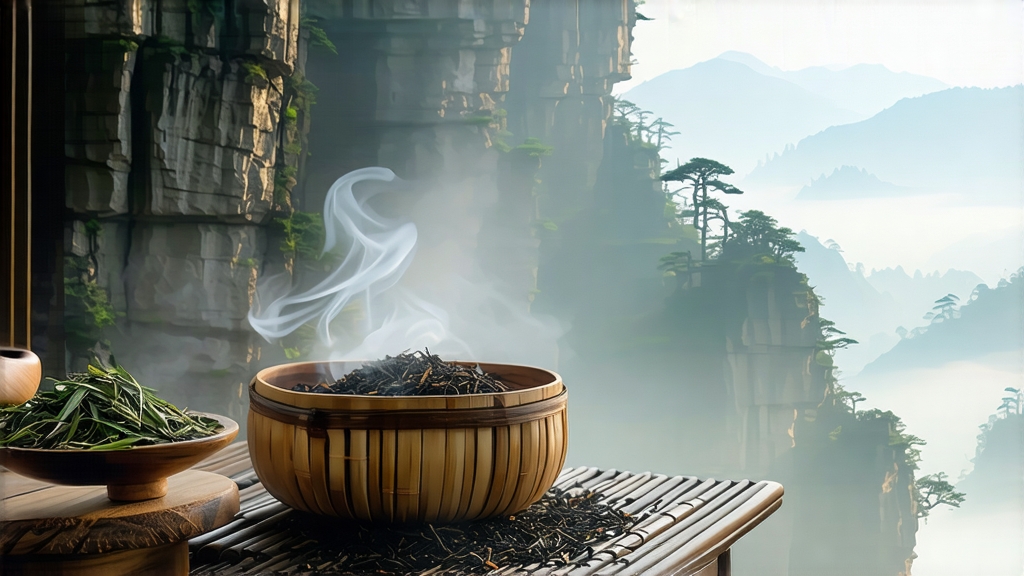
If every tea has a passport, Lapsang Souchong’s is stamped with the sooty fingerprints of 17th-century dockworkers, the perfume of burning resinous pine, and the seal of the British Crown. Discovered—some say invented—high in the Wuyi Mountains of Fujian Province, this rugged black tea was the first to travel beyond China’s borders, igniting a European thirst that would redraw global trade routes and, indirectly, topple emperors. Today, when sommeliers speak of “smoky wine” or bartenders rinse glasses with peated whisky, they are unconsciously echoing the flavor DNA of Lapsang Souchong. Yet beyond the campfire aroma lies a subtler story of terroir, timing, and human ingenuity that deserves to be tasted leaf by leaf.
Origins: From Misty Cliffs to London Coffeehouses
The name itself is a linguistic fossil. “Souchong” refers to the fourth and fifth leaves of the tea bush—larger, tougher, and once considered too coarse for the tribute teas reserved for emperors. “Lapsang” is an anglicization of “Lapu Mountain,” the original production area above the Tongmu Pass where cool air, constant mist, and mineral-rich granite soils slow the growth of the tea plant, concentrating amino acids and polyphenols. Legend claims the smoke-drying technique arose by accident: Qing-era soldiers requisitioned a village drying shed, forcing farmers to rush their freshly withered leaves over open pine fires so they could reach market before the leaf spoiled. The Europeans, already enamored of the malty black teas newly landed in Amsterdam and London, adored the result. By 1667 the East India Company listed “Bohea Lap Sang” at twice the price of green tea; Samuel Pepys mentions drinking “a cup of the new smoked China drink” in his diary. Thus Lapsang Souchong became the prototype for every black tea that followed, its very smokiness a signature of authenticity in an age when “China” was synonymous with mystery.
Terroir and Cultivar: Why Only Wuyi Tastes Like Wuyi
True Lapsang Souchong enjoys European Union Protected Designation of Origin status under the name “Zheng Shan Xiao Zhong,” meaning “Original Mountain Small Leaf.” The demarcated zone totals barely 600 hectares inside the Wuyi National Nature Reserve, an evergreen broad-leaf forest where bamboo, Masson pine, and camphor create a living aromatherapy chamber. The indigenous cultivar is Xiao Ye Zhong (Small Leaf Variety), a slow-growing shrub whose leaves are half the size of those used for Assam or Ceylon teas. Because the mountain receives only 3–4 hours of direct sunlight per day, photosynthesis favors the formation of linalool and geraniol—floral volatiles that later interact with pine smoke to create the tea’s signature “longan and honey” finish. Outside this micro-climate, farmers can replicate the process but never the perfume; the result is merely smoked tea, not Lapsang Souchong.
Craft: The Five Acts of Smoke and Fire
Processing begins in the chill hour before dawn when leaf moisture is highest. Pickers take only the “fish-leaf” and the one below it—mature enough for concentration of sugars, young enough to twist without breaking. The leaves are spread 3 cm deep on bamboo trays inside a charcoal-heated “qing lang” room where temperature (28 °C) and humidity (65 %) are monitored by craftsmen who still read the air with the backs of their hands. After 4–6 hours the leaf loses about 60 % of its weight, entering the “soft leaf” stage ideal for rolling. Orthodox rollers, identical in design to those exported to India in 1839, bruise the cell walls just enough to kick-start oxidation without shredding the leaf. Oxidation itself occurs in wooden tubs lined with wet cloth; the leaf pile never exceeds 8 cm, and every 20 minutes a worker “fluffs” the mass to release heat, ensuring even conversion of catechins into theaflavins and thearubigins that give the coppery liquor its brightness.
Now comes the step that divides purists from pragmatists: smoking. Traditional Tongmu houses have a three-level attic called a “hong long.” On the ground hearth, local Masson pine is